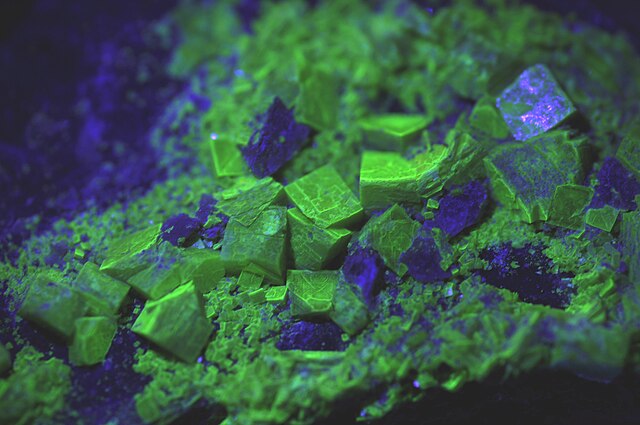Autunite (hydrated calcium uranyl phosphate), with formula Ca(UO2)2(PO4)2·10–12H2O, is a yellow-greenish fluorescent phosphate mineral with a hardness of 2–2+1⁄2. Autunite crystallizes in the orthorhombic system and often occurs as tabular square crystals, commonly in small crusts or in fan-like masses. Due to the moderate uranium content of 48.27% it is radioactive and also used as uranium ore. Autunite fluoresces bright green to lime green under UV light. The mineral is also called calco-uranite, but this name is rarely used and effectively outdated.
Autunite from Daybreak Mine, Washington
Autunite from Mount Kit Carson, Washington
Autunite under UV light
More crystals under UV light
Fluorescence is one of two kinds of emission of light by a substance that has absorbed light or other electromagnetic radiation. Fluorescence involves no change in electron spin multiplicity and generally it immediately follows absorption; phosphorescence involves spin change and is delayed. Thus fluorescent materials generally cease to glow nearly immediately when the radiation source stops, while phosphorescent materials, which continue to emit light for some time after.
Fluorescent minerals emit visible light when exposed to ultraviolet.
Fluorescent marine organisms
Fluorescent clothes used in black light theater production, Prague
A cup made from the wood of the narra tree (Pterocarpus indicus) beside a flask containing its fluorescent solution Lignum nephriticum.








